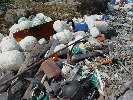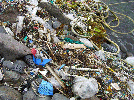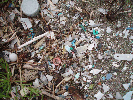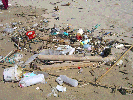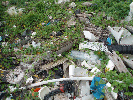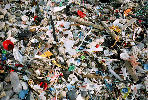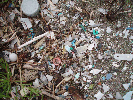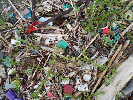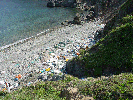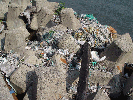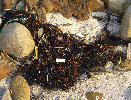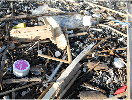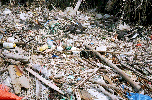Collection alone cannot solve the problem
*Click the photos to enlarge.
Large quantities of garbage flow to a specific area repeatedly
- Depending on the tide, windography, and direction, garbage is washed ashore in large quantities at specific areas. Even if the garbage is cleaned up, it will continu, tope to arrive again and again.
- The garbage being washed ashore is only a part of the ocean's garbage. A large amount of garbage is said to be either floating in the ocean or to have sunk to the bottom of the ocean.
Water, salt, and dirt in garbage make it difficult to recycle
- The garbage picks up various living organisms and dirt while drifting in the ocean, making it unsuited for recycling.
- The garbage is mixed with various kinds of materials, making it difficult to sort.
Ultraviolet light and high temperature degrade the garbage, breaking it up into small pieces
- Garbage degrades with time and breaks up. An originally large piece of garbage will break up into many small pieces.
- Plastics, which account for a high percentage in garbage, will not disintegrate naturally no matter how small they become.
- The smaller the pieces of garbage become, the higher the possibility for more living organisms to mistakenly ingest the garbage.


